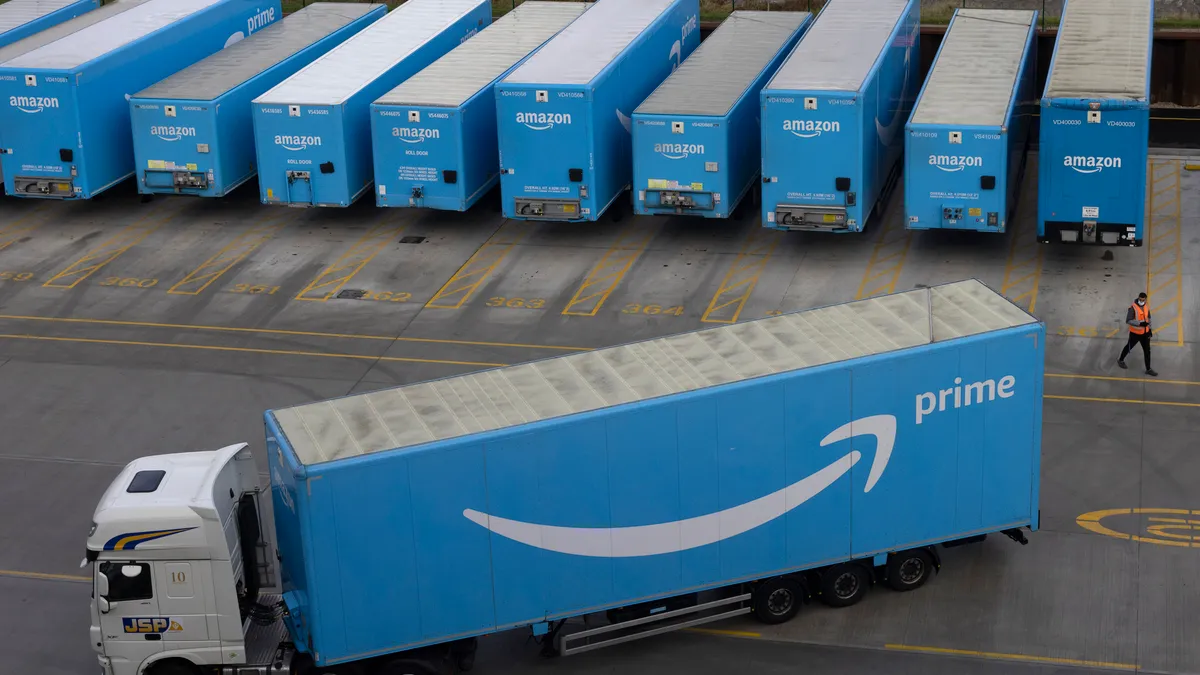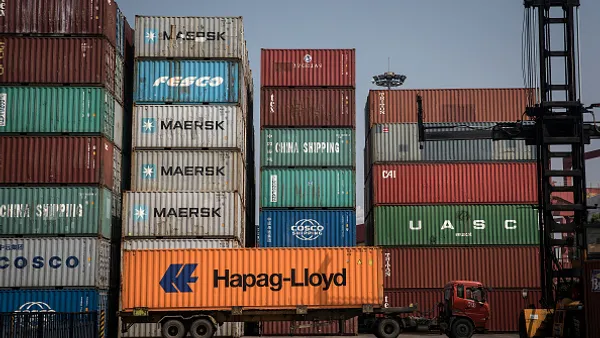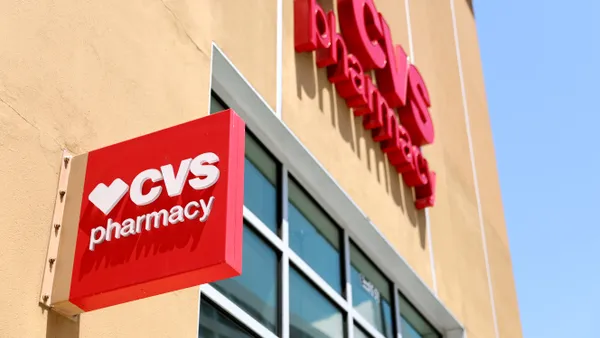Amazon paused new enrollments for Seller Fulfilled Prime despite strong delivery reliability from sellers in the fulfillment program, according to newly unredacted portions of the Federal Trade Commission's lawsuit against the company.
Amazon launched its Seller Fulfilled Prime program in 2015, which allows third-party sellers to independently fulfill Prime-eligible orders without using the company's in-house fulfillment service. The company paused new enrollment in 2019 before reopening it again this October.
The FTC's lawsuit against Amazon, originally filed in September, highlights that pause as one example of how sellers are cornered into using Amazon's fulfillment services instead of using alternative providers.
Sellers enrolled in Seller Fulfilled Prime, or SFP, met Amazon's delivery estimate requirement more than 95% of the time in 2018, according to the complaint. These sellers at times outperformed orders covered by Amazon's own fulfillment service, it added.
"Had Amazon genuinely cared about improving shipping speeds, it would have encouraged SFP sellers to use independent fulfillment providers instead of shuttering SFP to deliberately impede those providers’ growth," the complaint said.
Amazon spokesperson Tim Doyle said in an emailed statement that the FTC's claims that SFP worked well for customers in 2018 are highly misleading.
"The fact is that in 2018 sellers using Seller Fulfilled Prime were promising deliveries within two days less than 16% of the time — far worse than the performance of sellers using Fulfillment by Amazon and far below the high standards and expectations our customers have for Prime," Doyle said.
SFP gives sellers the chance to display coveted Prime branding on their products while maintaining more control over the fulfillment process, as long as they meet Amazon's expectations on Prime shipping speeds and other requirements. It was an early hit with sellers, and it enrolled approximately 15,000 sellers at its peak, the complaint said.
Amazon began turning against the program in early 2019 as independent fulfillment providers marketed their ability to help sellers obtain coveted Prime eligibility on their products through SFP, per the complaint. Executives were concerned SFP could help alternative fulfillment providers scale and benefit other retailers.
"Amazon’s CEO of Worldwide Operations wrote that he was 'losing [his] mind' after learning that UPS was advertising that its online retail fulfillment service could fulfill Prime-eligible orders," according to the complaint. "In that same email chain, two high-level Amazon executives agreed that Amazon should consider shutting down SFP in the United States."
Some Amazon employees advised the company to not sunset the program, as it would eliminate Prime benefits for 115 million items, the complaint said. They suggested reopening program enrollment by creating an alternative Prime badge for SFP-fulfilled orders. But Amazon's CEO of Worldwide Consumer at the time, Jeff Wilke, "vetoed the idea."
The complaint alleges the company knew closing SFP enrollment would slow overall shipping speeds, but it prioritized "excluding rivals and foreclosing competition" despite the negative impact it would have on shoppers.
Sellers continued to be interested in SFP after the pause, however, with a program waitlist growing to more than 8,000 sellers six weeks afterward.
For sellers already enrolled in SFP, Amazon communicated that it expected them to fulfill orders themselves rather than through independent fulfillment providers. Since then, most SFP sellers have either left or been disqualified from the program, the complaint said.
Doyle said Amazon has learned a lot on how to improve the program since the pause took place in 2019.
"We’ve now reopened enrollment to an improved Seller Fulfilled Prime program that can meet our customers’ expectations," Doyle said.














